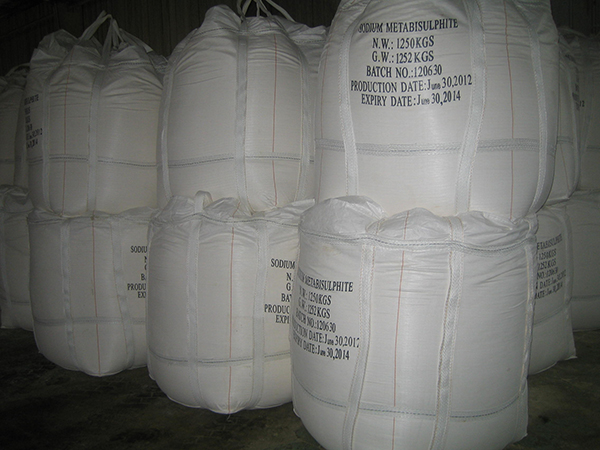Effect of sodium carbonate dosing method on the treatment effect of sodium sulfite production wastewater
Effect of sodium carbonate dosage method on the treatment effect of sodium sulfite production wastewater:
Sodium carbonate is used as a neutralizing agent, and it cannot be prepared into a solution all at once to react with wastewater. Because it is formulated into a saturated solution at one time, a solid product is obtained after the reaction, and a large amount of water needs to be evaporated, which consumes a large amount of energy; if it is formulated into a supersaturated solution, the reaction is too violent, and exhaust gas SO2 will be released, causing secondary pollution. The experimental results show that after the neutralization of the saturated sodium carbonate solution, the solid sodium carbonate is added in batches one by one, and the wastewater is added dropwise in batches, and the crystals are gradually precipitated in the most way.
Sodium metabisulfite inspection: take thiosulfate 1.1g of this product, slowly add 10ml of dilute hydrochloric acid, after dissolution, heat in a water bath for 10 minutes, let cool, transfer to a colorimetric tube, add water to 20ml, if it is cloudy, and Sodium thiosulfate titration solution (0.1mol/L) 0.20ml The comparison solution made by the same method should not be more concentrated (0.2%). Take iron salt 1.0g, add 5ml of water and dissolve with 2ml of hydrochloric acid, put it on a water bath and evaporate to dryness, add 15ml of water and 2ml of hydrochloric acid to the residue. After dissolving, add an appropriate amount of bromine test solution to make the solution micro yellow, heat to remove excess bromine, Let it cool, add water to 25ml, and check it according to law (Appendix ⅧG). It should not be deeper (0.002%) than the control solution made of standard iron solution 2.0ml. Take 1.0g of heavy metal, dissolve it with 10ml of water, add 5ml of hydrochloric acid, put it on a water bath and evaporate to dryness, add 15ml of water to the residue, slowly boil for 2 minutes, filter, add an appropriate amount of bromine test solution to the filtrate to clarify, heat to remove excess Bromine, let cool, add 1 drop of phenolphthalein indicator solution and an appropriate amount of ammonia test solution to make the solution appear pink, add 2ml of acetate buffer (pH3.5) and an appropriate amount of water to make 25ml, check according to law (Appendix Ⅷ H first method ), heavy metals must not exceed 20 parts per million. Take 1.0g of this product as arsenic salt, add 4ml of water to dissolve, add 3ml of nitric acid, and evaporate to dryness in a water bath. Add a few milliliters of water to the residue, stir well, filter, and wash the filter residue with water. The washing liquid is combined with the filtrate, evaporated to dryness. 5ml of hydrochloric acid and 23ml of water, after dissolution, check according to law (Appendix Ⅷ J first method), should meet the regulations (0.0002%).

